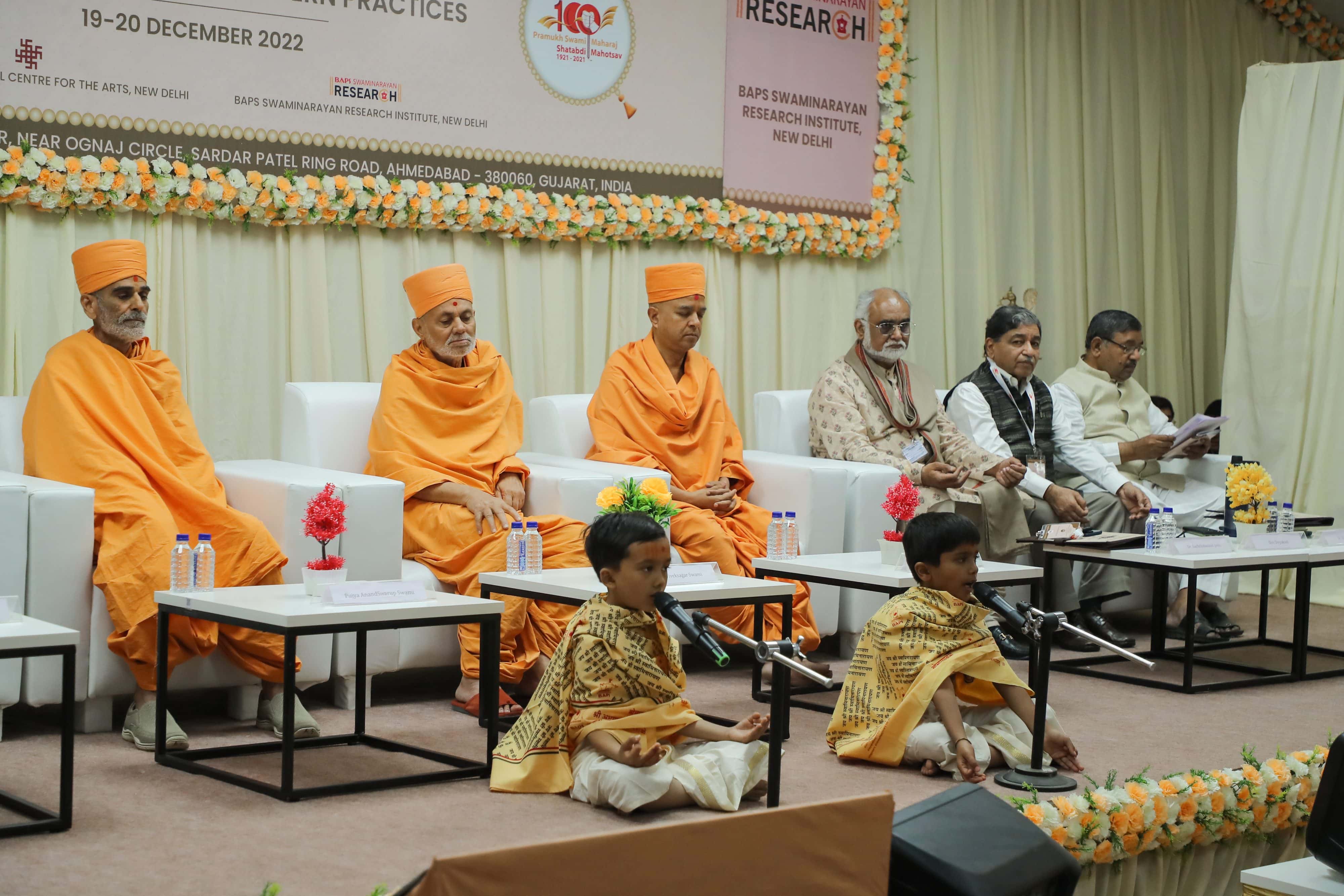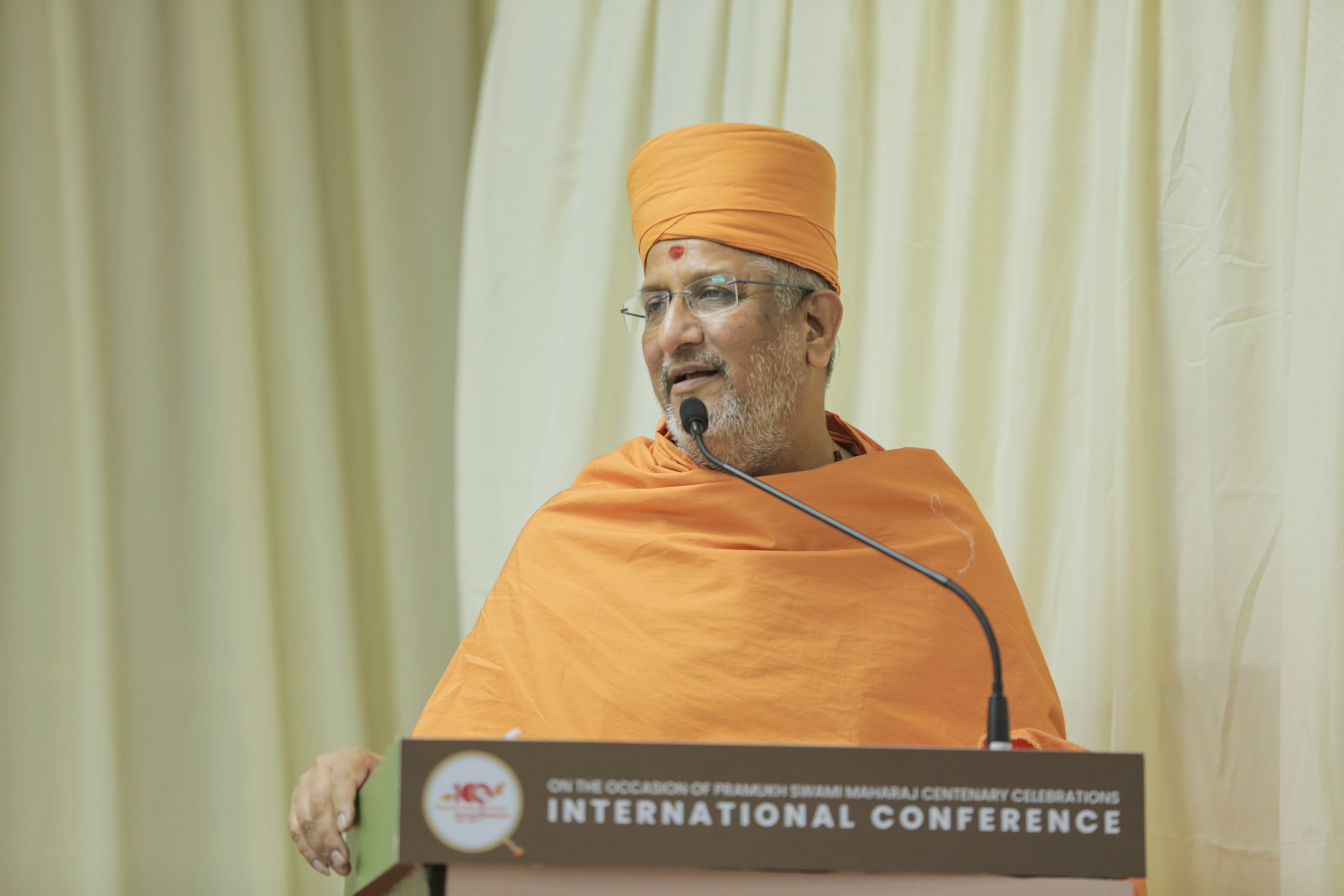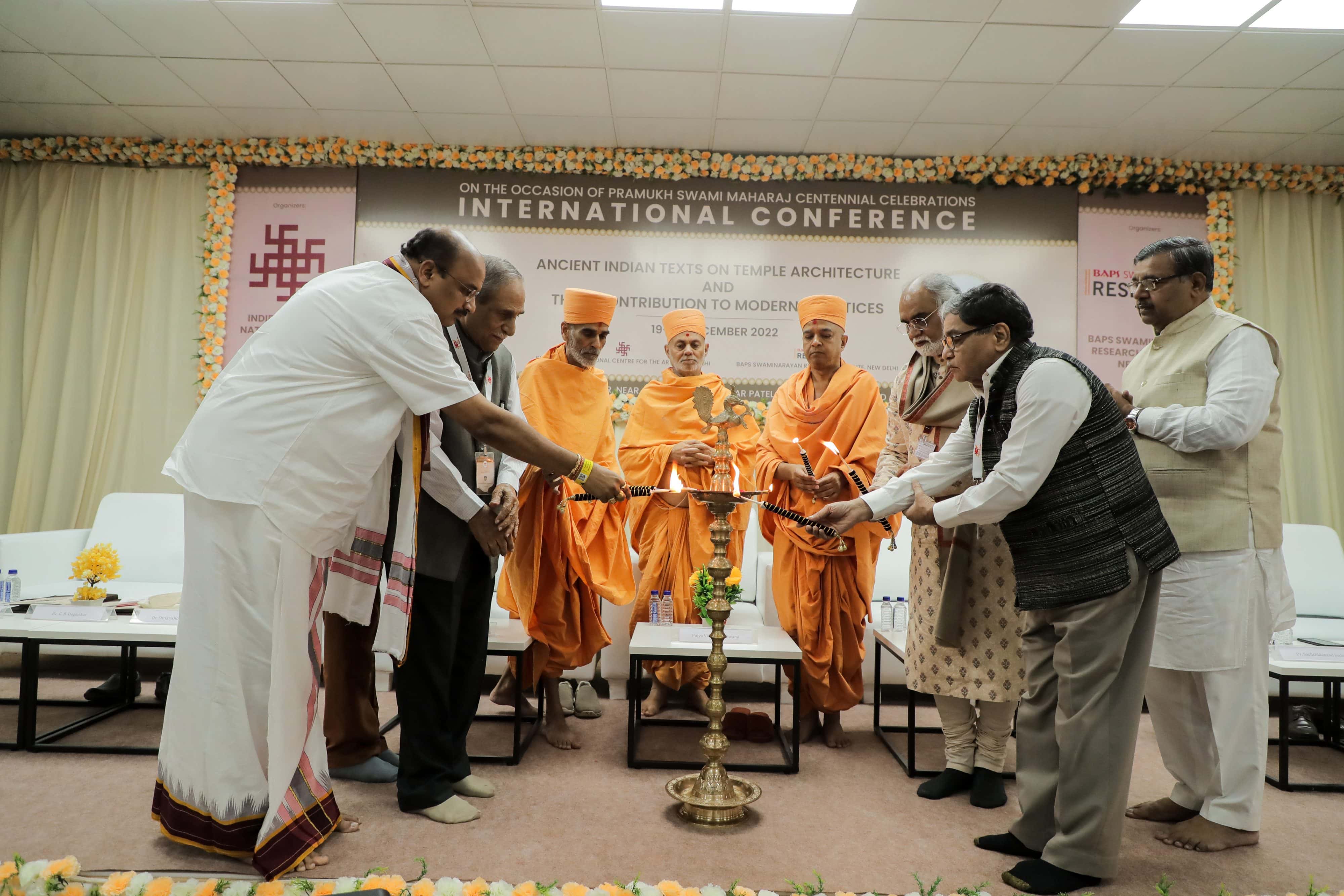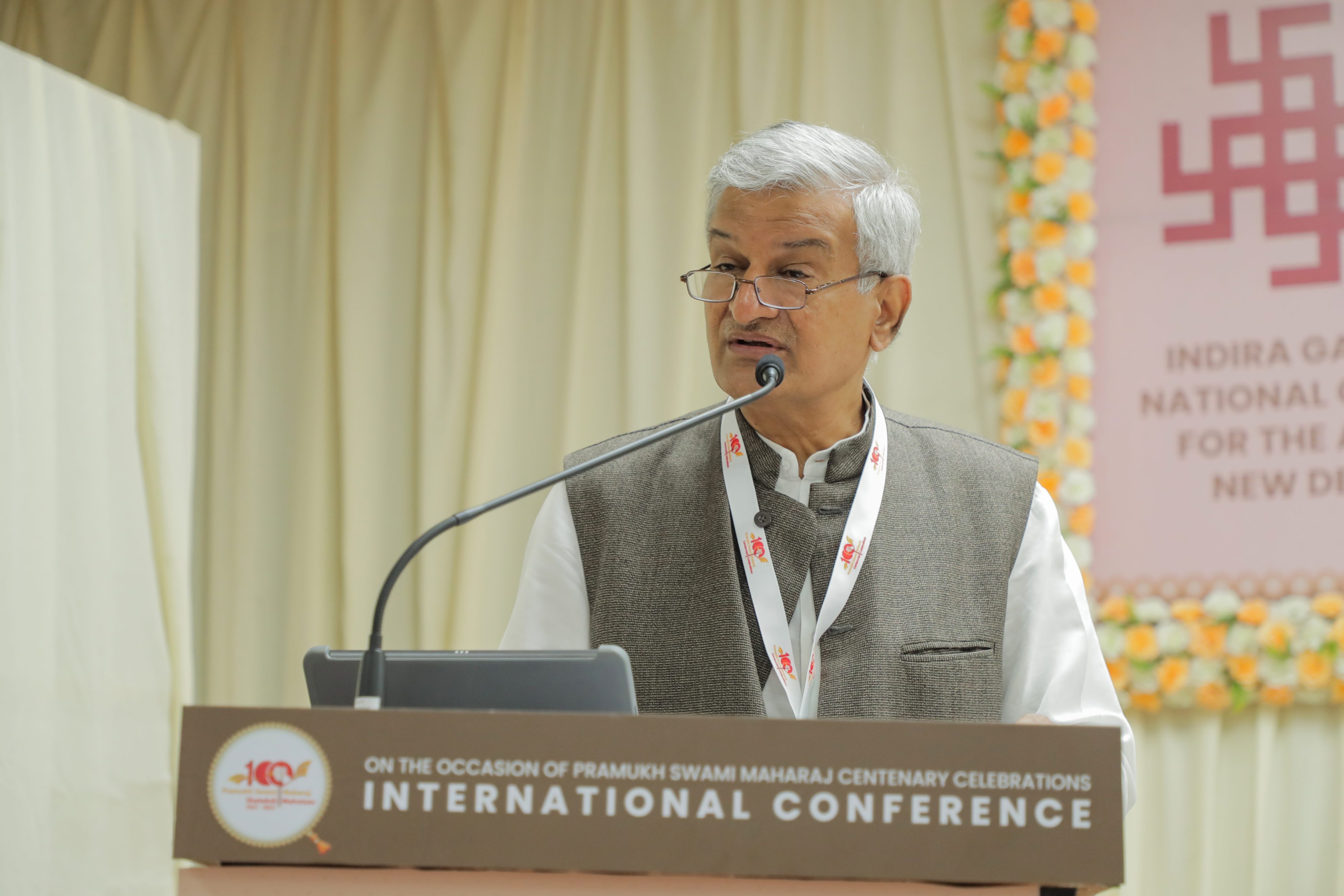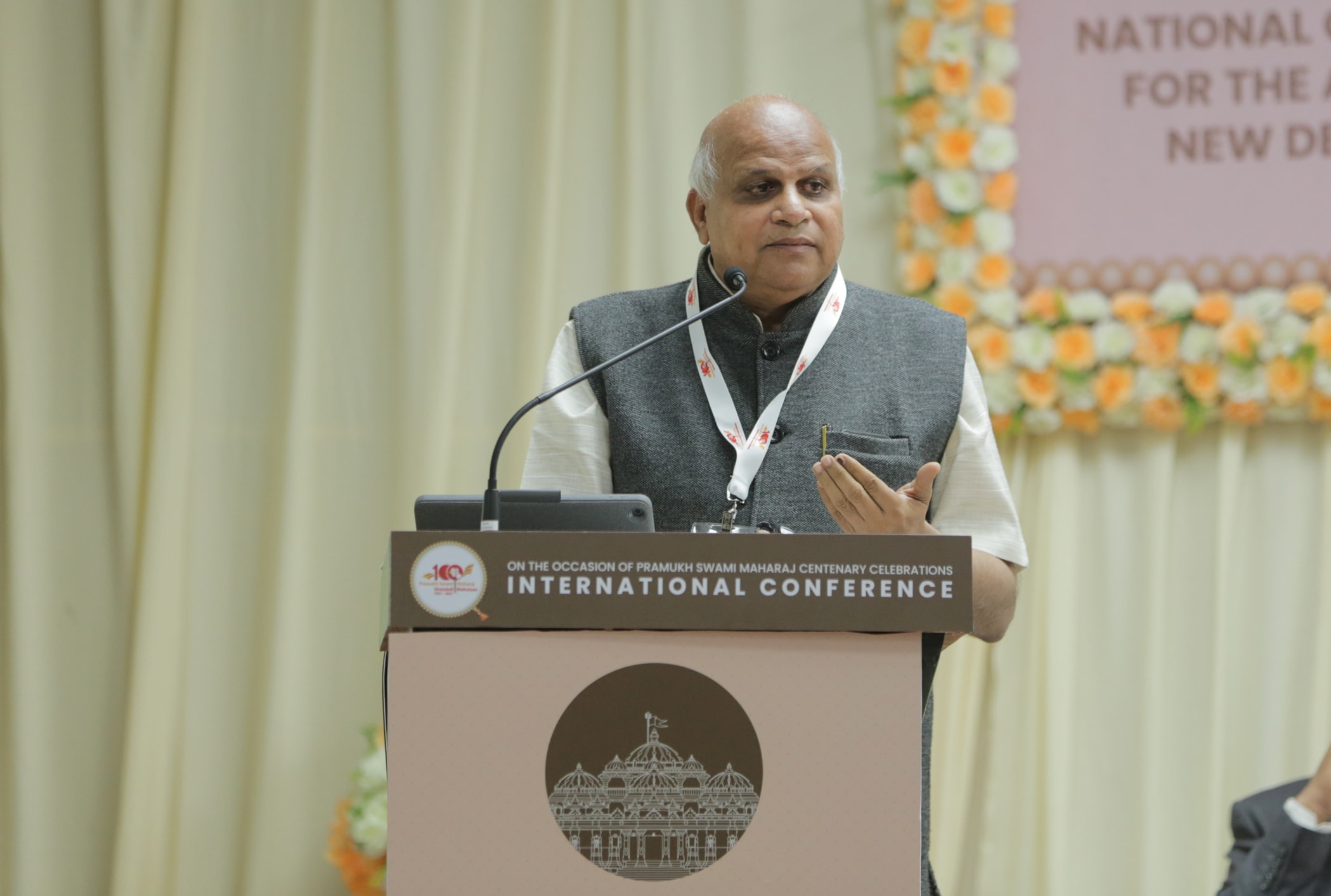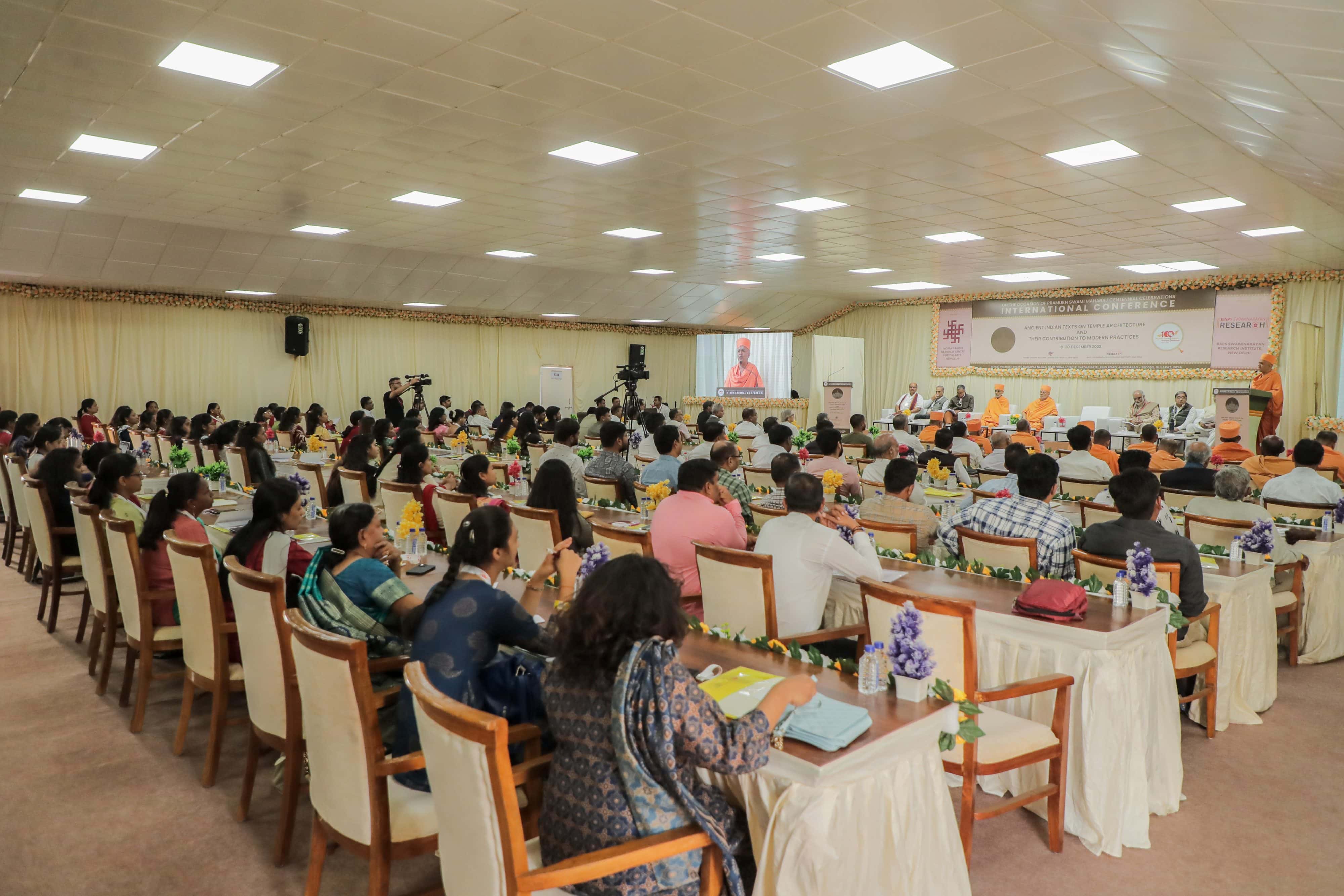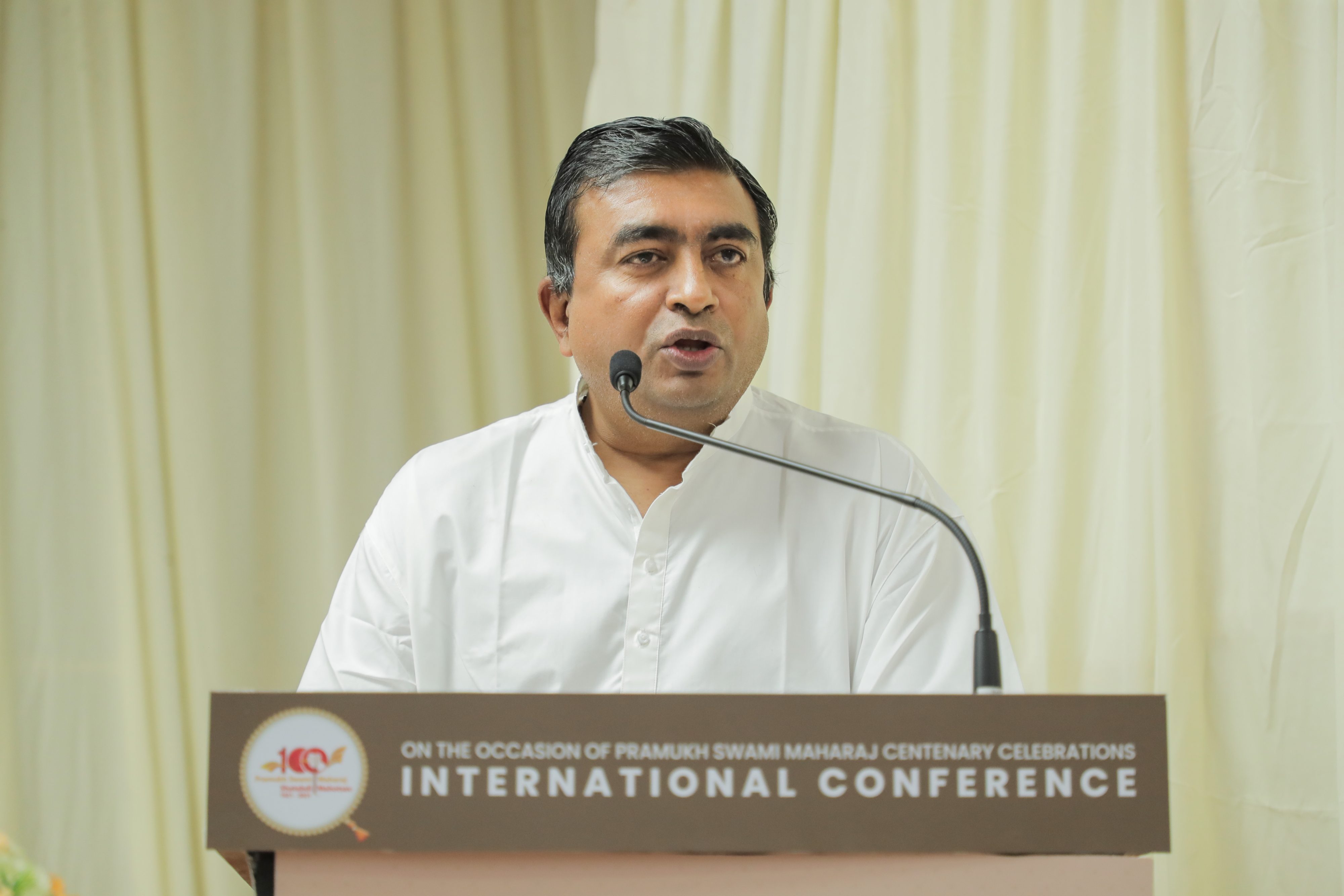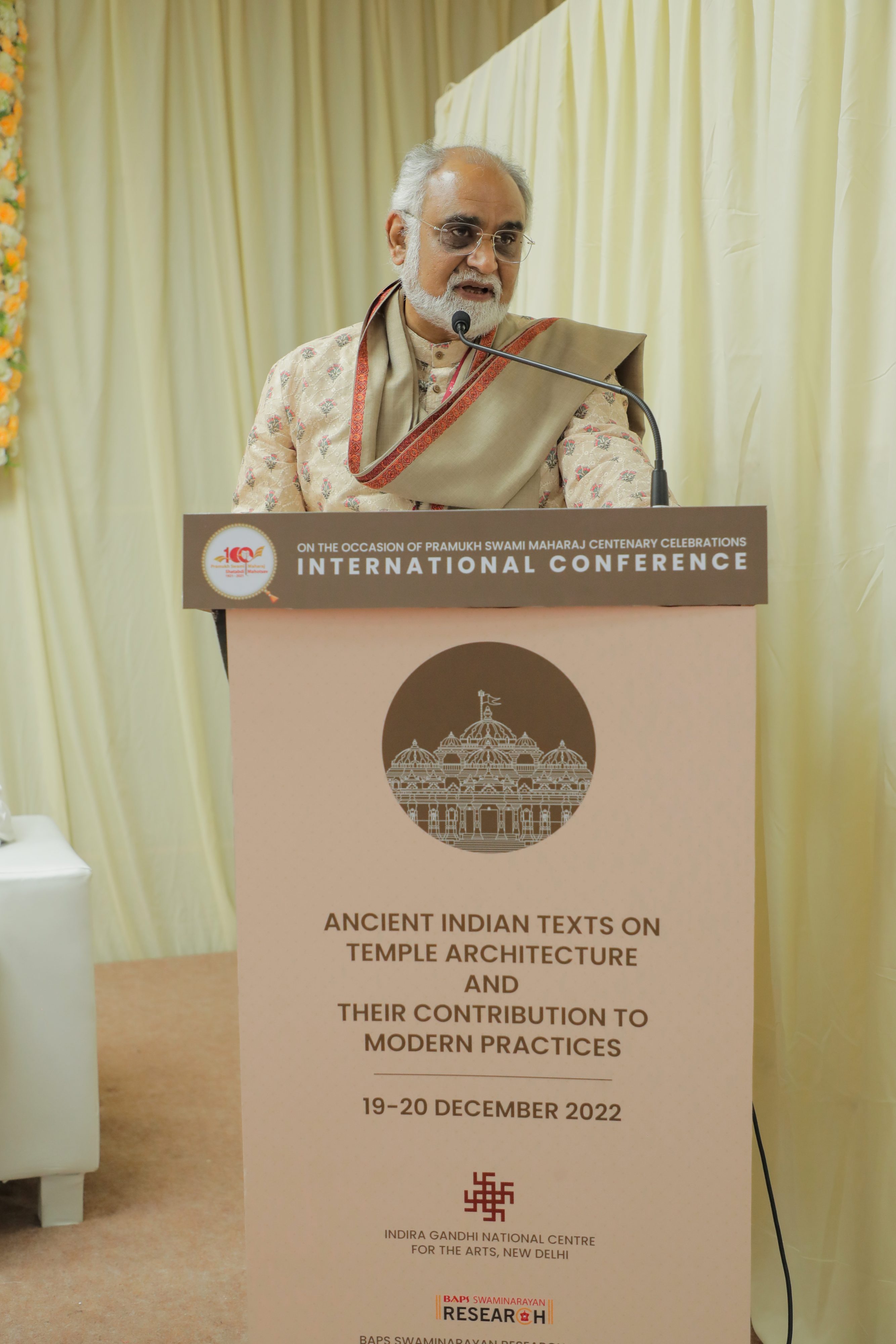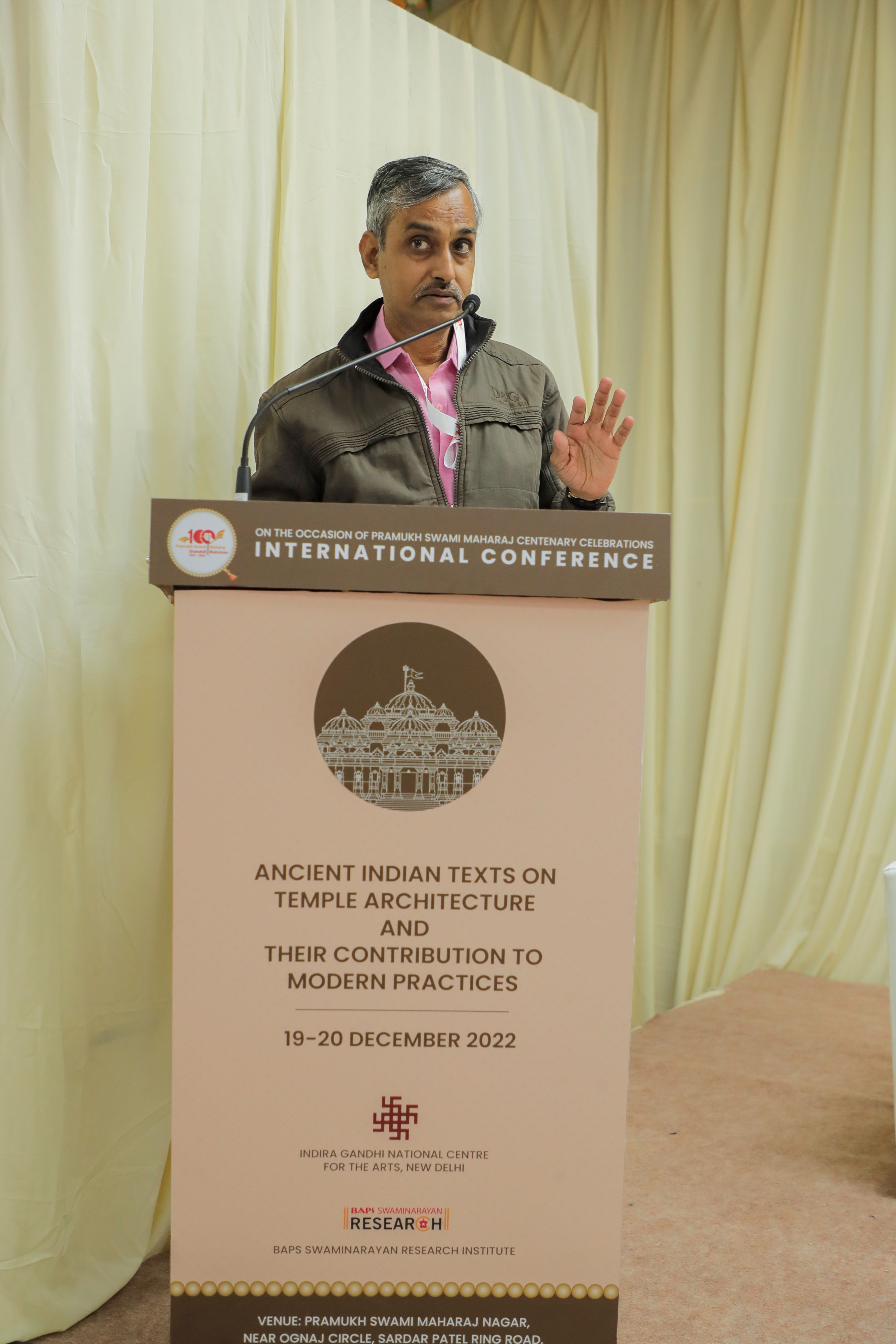In his opening address of the following day’s first session, Shri D. N. V. Prasad Sthapathy acknowledged Pramukh Swami Maharaj’s decisive role in representing Indian traditions and cultural values by creating temples throughout five continents. He also expressed his gratitude to Mahant Swami Maharaj for his involvement in the inauguration of Ramanujacharya’s murti, also known as the Statue of Equality. Thereafter, Shri Divya Kush recognized the importance of vastu in practicing modern architecture and the relationship between nature and art in shaping architecture. Shri Anand Ukidve then presented the journey from ancient Indian architecture to the extraordinary replica of Swaminarayan Akshardham currently displayed at the Pramukh Swami Maharaj Nagar, Ahmedabad. Dr. Shonaleeka Kaul, an Associate Professor at Jawaharlal Nehru University, recognized the significance of the Indian temple architecture as not just a confined place, but rather a universal and encompassing space. A parallel session was also conducted and chaired by Shri Rabindra Vasavada.
The following session was chaired by Shri Jitendra Shah. During this session, Dr. Shrutiprakashdas Swami, a renowned Sanskrit scholar and the Director of AARSH, Gandhinagar, highlighted Swaminarayan Akshardham’s (New Delhi) comprehensive expression of ancient Indian scripturality by including the chaturvyuh (24 unique) murtis. He further explained how this architectural presentation of religious tradition furthered the intellectual revelations of Bhagwan Swaminarayan.
Padma Shri Prabhakar Maharana, a well-known sculptor from Orissa, thereafter, praised the efforts of BAPS sadhus, particularly Shrutiprakashdas Swami, in examining the connection between ancient Indian texts and modern temples and adhering to them when creating BAPS mandirs. He then elaborated on the significant role of religious artisans in integrating ancient Indian architectural principles through temples right from the 8th century CE.
Shri Jitendra Shah concluded the session by acknowledging the pioneering contributions of the Swaminarayan tradition in constructing temples and identified the BAPS Swaminarayan Akshardham at Robbinsville as one of the most awaited creations. By drawing parallels between mandir creation guidelines described within ancient texts and spiritual practices involved in mandir creation practices, he recognized Pramukh Swami Maharaj’s contributions to the temple-building tradition as profound expressions of dedication and devotion.
In the concluding session of this International Conference, Prof. G. B. Deglurkar remarked, “I have not seen such a well-organized event elsewhere. Everyone here works selflessly—without asking for anything in return and without expectations.” Regarding the Pramukh Swami Maharaj Nagar, he noted, “The ambience is both magnificent and divine. It cannot be human-made, but only divinely inspired.” Prof. G. B. Deglurkar further explained, “He (Pramukh Swami Maharaj) has given new life to Hinduism… Pramukh Swami Maharaj’s inspired creation of over 1100 temples is a wonder. Yesterday, Shri Y. S. Rajan stated that with the blessings of Swamiji, one day a temple will be created on the moon. I remarked that the BAPS Hindu temple being constructed in Abu Dhabi is itself a temple on the moon.” He finally emphasized the significance of temples in preserving a 7000-year old Indian tradition. Shri Yatin Pandya also remarked that “the legacy of Pramukh Swami Maharaj is not a fossilized history, it is a living history.” Thereafter, Akshaymunidas Swami, who has been contributing to the creation of BAPS mandirs around the world for more than five decades, felicitated Shri Rabindra Vasavada, Shri Yatin Pandya, Shri Jitendra Shah, Shri Chandrakant Sompura, Shri Virendra Sompura, Shri Devdutt Sompura, and Shri Chetan Sompura.
Finally, Dr. Jyotindra Dave expressed his gratitude to the organizers of the conference, particularly Dr. Sachchidanand Joshi, Shri Pratapanand Jha, and Aksharvatsaldas Swami. He also thanked Prof. G. B. Deglurkar, Shri Rabindra Vasavada, Dr. Krishna Jugnu, Shri Jitendra Shah, Shri Yatin Pandya, and all the participants and volunteers for their valuable contributions.
Dignitaries attending the conference expressed gratitude for being given the opportunity to collaborate, discuss, and share their insights. New scholars and students also appreciated the experience of learning, exploring, and contributing to the field of study, as the conference allowed them to expand their knowledge and skills and make meaningful contributions to the academic community. Many delegates also felt that the Pramukh Swami Maharaj Nagar was a fitting location for the conference as it exemplified the magnificence of Indian cultural values and presented architectural traditions in a modern context. This conference not only became an excellent platform for sharing incisive academic insights but also offered a tribute to the life, work, and message of His Holiness Pramukh Swami Maharaj—the unprecedented master-builder of our times.



